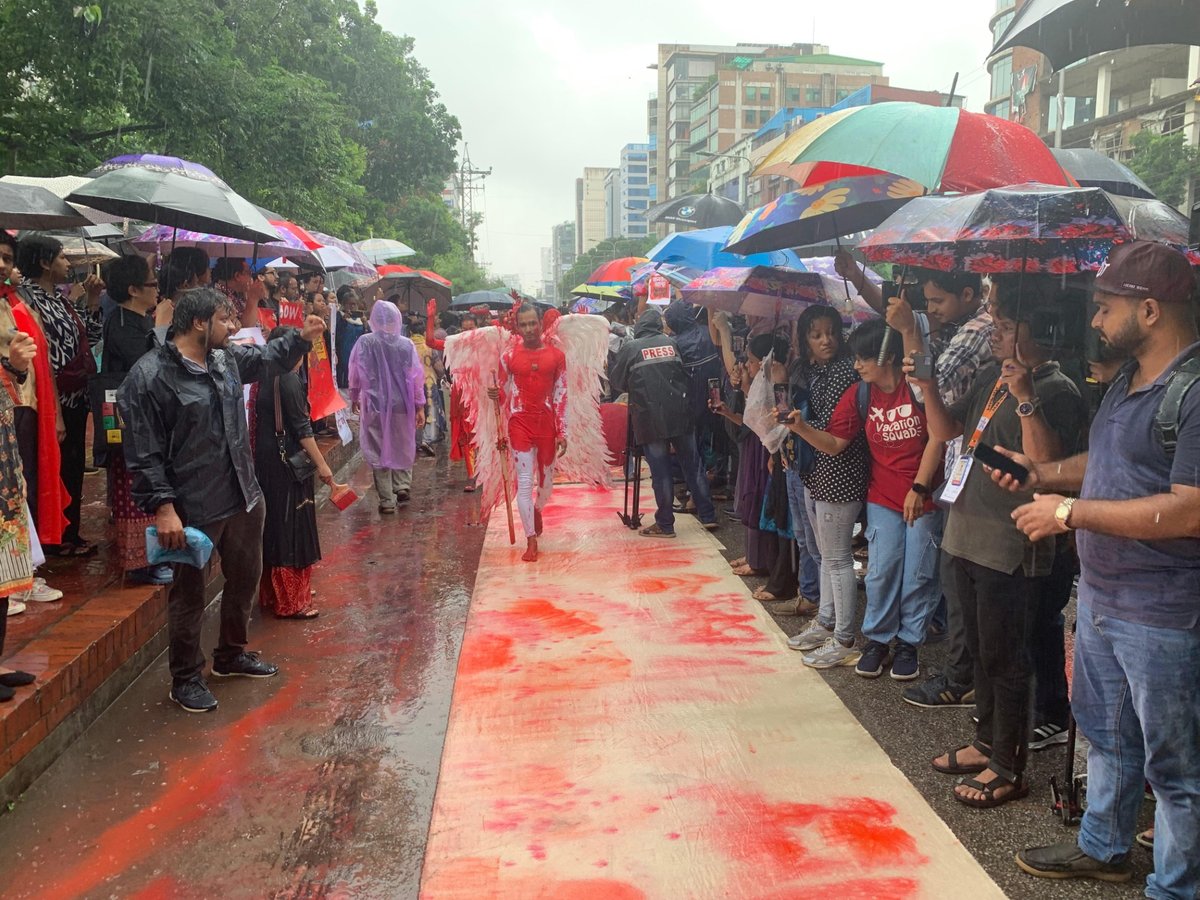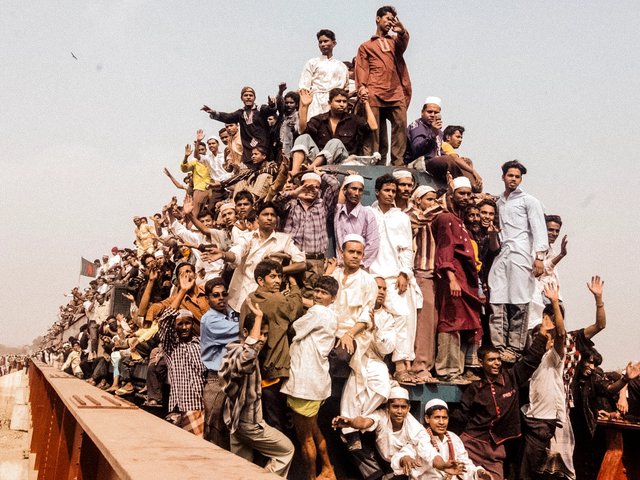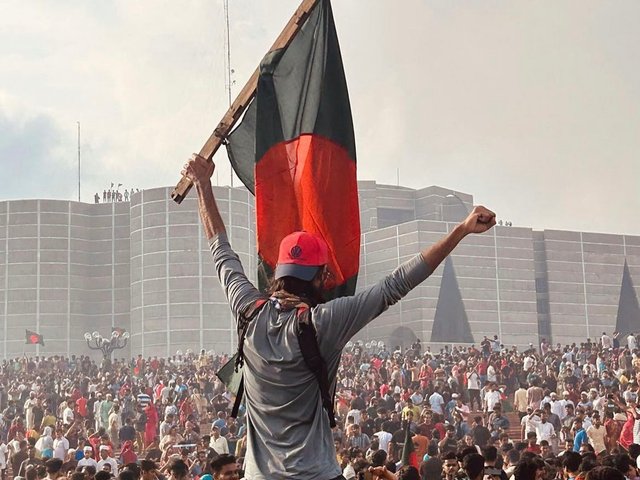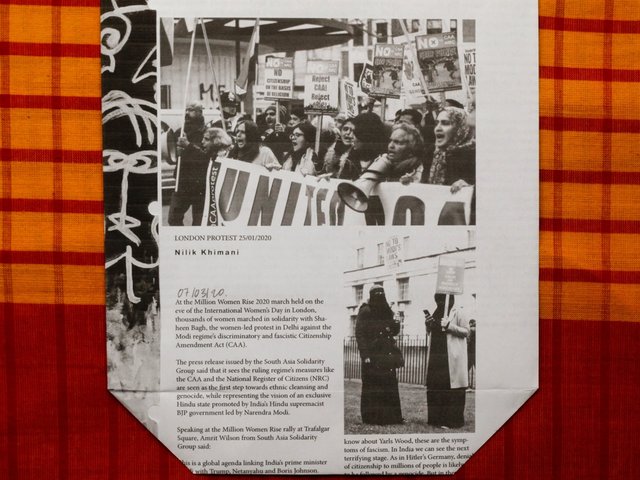The streets of Dhaka took on a dramatic new look after the fall of Prime Minister Sheikh Hasina’s government in August. Student protesters painted thousands of murals along the city’s sidewalks. One of the street artists, Taslima, 19, described the action to The Art Newspaper as “a souvenir of our new independence”.
Bangladesh has long attracted attention for the quality of its art. In 1948, the Modernist painter Zainul Abedin founded an art school in Dhaka, which produced successive generations of fine artists, a focus of domestic pride and international acclaim. But recently artists found themselves restricted by a shrinking civic space.
“Independent artists suffered over the past 15 years,” says the artist and curator Amirul Rajiv. And few areas of the country’s vibrant cultural life remained unaffected by a government desperate to control the narrative. But today, in the aftermath of the “monsoon revolution”, the Bangladeshi art scene is coming to terms with a new-found freedom.
A new book, Paint the Sky, produced by the World Bank in collaboration with the Dhaka photography institute Drik documents the wall art. Many of the murals refer to ideals of progress and communal harmony. A few refer to topics that have long been taboo in Bangladesh, such as military repression of Indigenous people in the remote Chittagong Hill Tracts; “mainstream artists have never touched that”, Drik’s founder Shahidul Alam tells The Art Newspaper.
In recent years, Alam says, “there was a conspicuous absence of protest art. The regime got away with a lot due to silence.”
However, the government never quite managed to silence Bangladeshi political cartoonists; another new publication, Satire and Ridicule, also edited by Shahidul Alam, includes cartoons that brought down a dictator. Simu Nasser, set up the online platform Earki after mainstream newspapers stopped publishing cartoons and satirical pieces. And there were risks: one celebrated cartoonist, Ahmed Kabir Kishore, was even tortured during a ten-month detention in 2020. He was prosecuted under a repressive 2017 law, the Digital Security Act, which criminalised speech.
During the recent uprising, Earki became the most visited Facebook page in Bangladesh, thanks in part to its combination of fierce critique and bold imagery. After the initial wave of protests, the Earki team moved into safe houses as the police began to arrest critics of the government, amid a bloody crackdown. Then, on 17 July, the authorities turned off the internet. Nasser left Bangladesh soon after, taking with him a USB drive of cartoons that he published as soon as he landed in Dubai, broadcasting a mixture of news, satire and art to millions of Bangladeshis living abroad.
When the internet was restored, young Bangladeshis shared images and motifs that had originally appeared in Earki, picking up oblique references to the prime minister herself who could not be named publicly for fear of reprisals.
But even today, outspoken artists remain at risk. Earki has continued to criticise factions empowered by Hasina’s fall, including Islamist groups. “We feel comfortable when everyone is angry with us—we know we’ve done something right,” Nasser says.
Now is the time to practise our freedoms as much as possible, otherwise we might lose themFouzia Afroz, satirical site Earki
Careful but undaunted
The insouciance comes at a cost. Earki was recently branded “anti-Islam” in a Facebook post, which exposed its editorial team’s identities, and threatened violence. They are careful but undaunted: “Now is the time to practise our freedoms as much as possible, otherwise we might lose them,” says Fouzia Afroz, an Earki editor.
In December, ten Bangladeshi artists practised those freedoms in an exhibition at Bengal Foundation, a private gallery space in central Dhaka. In Body and the Map, the curator Sharmillie Rahman worked with a group of politically conscious artists in a range of mediums. The resulting works were a “philosophical and emotional meditation on a time that had fallen out of joint,” Rahman tells The Art Newspaper. “For each artist, this is the first, most immediate response to the uprising.”
One artist, A. Asan, who comes from an ethnic minority in Bangladesh, produced a series of woodcuts, filled with distorted bodies in symbolic landscapes. Asan painted a banner filled with similar motifs for an artists’ demonstration on 2 August, days before the government fell. “I had to speak out and this is my only language—art is like a weapon for me,” Asan says.
Amirul Rajiv helped coordinate that protest, in which artists inscribed the names of those killed in red paint on a long white scroll as the monsoon rains blurred them into a blood-red stain. “It was like everyone was in a trance—they were breaking the bounds of fear after so long,” Rajiv recalls.
Bangladesh has a long history of popular agitation against British and Pakistani rule before the country’s independence in 1971, and against civil and military dictatorships thereafter. “Culture has never been a side-track in Bengal”, Rajiv says. “Singers, songwriters and artists have always been at the core of our political movements.”
The new, interim government appears keen to harness that. In December the Bangladesh Shilpakala Academy, a national arts centre, put on an exhibition of photographs from the uprising; in the new year it plans to display artists’ responses to the “new Bangladesh”.
“We’re not looking for propaganda,” says the academy’s fine arts director, Mustafa Zaman. “The grey areas need to be addressed too. That’s what art is really about.”





